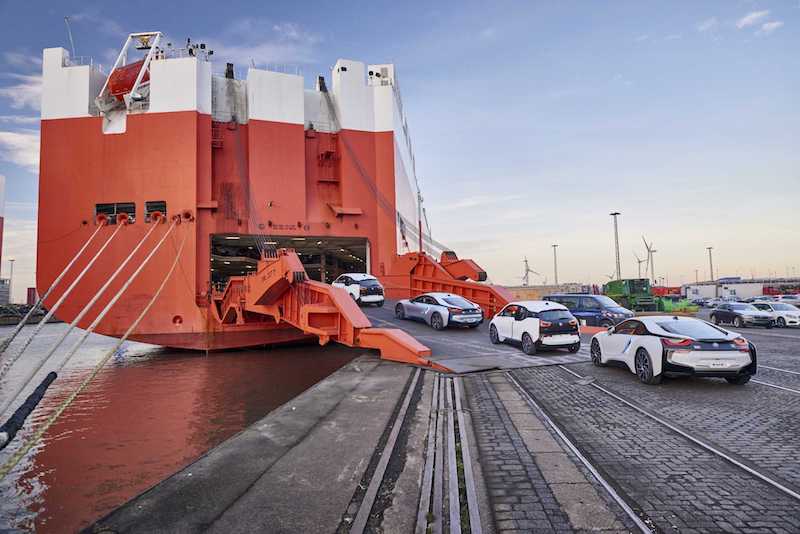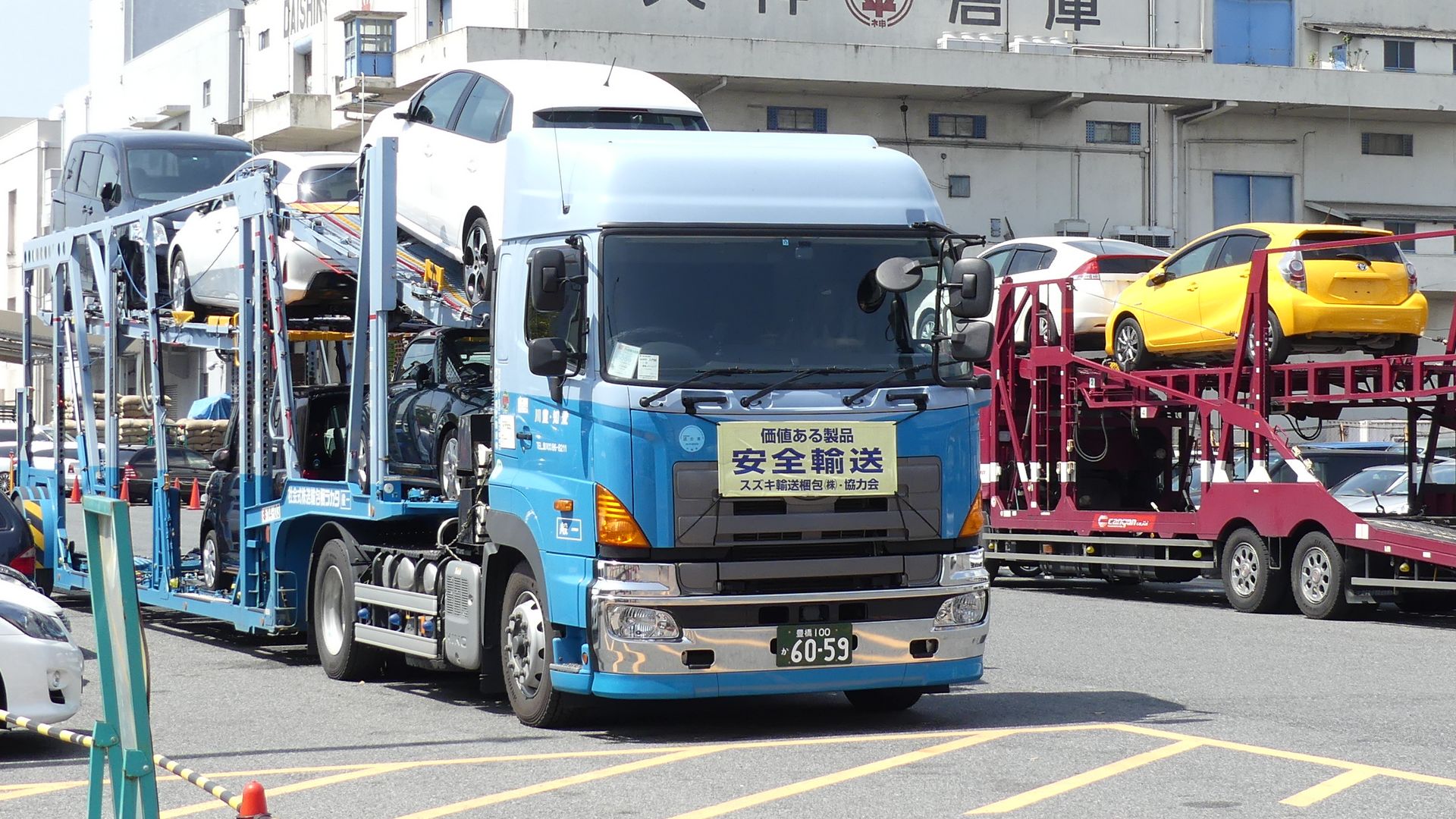How To Import Car From Japan?
Importing a car from Japan can be an exciting venture, offering access to high-quality vehicles at competitive prices. Knowing the process is key whether you’re seeking a classic JDM sports car or a reliable daily driver. Today we will guide you through the necessary steps to import a car from Japan, from selecting the right vehicle to navigating customs and registration.

How To Import Car From Japan?
Importing a car from Japan involves a series of steps that can seem daunting at first, but with the right knowledge and guidance, you can streamline the process. Japan is known for its high-quality vehicles and often more competitive prices, making it a popular choice for car enthusiasts and importers worldwide. Here’s how you can import a car from Japan:
Step 1: Research and Select a Vehicle
Start by determining the type of vehicle you want to import. Japan offers a range of unique models, especially in the performance and classic car segments. Websites like Goo-net Exchange and Japan Partner can be used to browse vehicles online. Consider factors such as the age of the car, its condition, specifications, and your local country’s import regulations (such as emission standards and right-hand drive regulations).
Step 2: Choose a Reputable Exporter or Auction House
Once you’ve identified the car you want, you need to choose a reputable exporter or participate in car auctions in Japan. Auctions are popular because they often offer better deals than dealers. Ensure the exporter or auction house has a good track record and can provide detailed inspections and reports on the car’s condition.
Step 3: Price Negotiation and Payment
Negotiate the price with the seller or place a bid at an auction. Once a price is agreed upon, you’ll typically need to make a payment through bank transfer. It’s crucial to understand all costs involved, including purchase price, shipping, insurance, and import duties.
Step 4: Shipping Arrangements
The exporter will help arrange for the car to be shipped to your country. There are generally two options for shipping: Roll-on/Roll-off (RoRo) ships, where cars are driven on and off the ship, and container shipping, which is more expensive but offers better protection for the vehicle. You will need to decide on the port of entry where your car will be delivered.
Step 5: Customs Clearance
Once the car arrives, it must go through customs clearance. You will need to submit necessary documentation such as the Bill of Lading, export certificate, and any other documents required by your country’s regulations. Pay attention to import duties, taxes, and any other fees that may apply.
Step 6: Compliance and Registration
After clearing customs, the vehicle may need to comply with local vehicle standards, including emissions and safety regulations. This might involve modifications to the car. Once compliance is confirmed, you can register the car in your country. Registration processes vary widely, so consult your local vehicle registration authority.
Step 7: Insurance and Roadworthiness
Ensure the car is insured before driving it. You might also need to have a roadworthiness inspection (such as an MOT in the UK) to confirm that the vehicle is safe to drive.

Tips for a Smooth Process
- Documentation: Keep copies of all transactions, correspondence, and documents related to the car purchase and shipping.
- Regulations: Always check the latest regulations in both Japan and your country to avoid surprises. Regulations can change, impacting the eligibility of your car for import.
- Local Help: Consider hiring a customs broker or an agent specializing in vehicle imports to assist with the process, especially if you are not familiar with the import laws and regulations.
Which Vehicles Can I Legally Import From Japan?
Here are general guidelines and considerations for determining which vehicles you can legally import from Japan:
1. Age Restrictions
Many countries have age restrictions on imported vehicles. For instance, in the United States, a popular rule is the “25-year rule,” which allows the import of foreign vehicles that are at least 25 years old without needing to meet current Federal Motor Vehicle Safety Standards (FMVSS). Similarly, Canada has a 15-year rule. Always check the latest regulations in your country as these can frequently change.
2. Environmental and Safety Regulations
Vehicles imported from Japan must often comply with local environmental and safety standards. This includes emissions regulations and safety features like airbags and anti-lock braking systems. For example, in the European Union and Australia, imported vehicles must meet specific emissions standards that might require modifications before registration.
3. Right-Hand Drive Regulations
Since most Japanese vehicles are right-hand drive, you need to check if there are any restrictions on using such vehicles in your country. Some countries allow them without restriction, while others may require modifications or limit their use to certain areas or purposes.

4. Specific Vehicle Eligibility
- Classic and Antique Cars: Generally, classic and antique cars are easier to import because many countries provide exemptions for older vehicles, considering them to be of historical or cultural significance.
- Specialty and Performance Cars: Vehicles that are rare, have high performance, or offer unique technology may also be eligible for import under certain conditions, such as for show, display, or race purposes, rather than everyday use.
- Kei Cars: These uniquely small vehicles from Japan may be restricted in some countries due to safety concerns, despite their popularity and excellent fuel efficiency.
5. Modification and Compliance
Before a vehicle can be registered for use on public roads, it might need modifications to comply with local vehicle standards. This can include upgrades to the lighting systems, emissions controls, and safety equipment. In some regions, a compliance inspection is required to ensure the vehicle has been modified to meet local standards.
6. Homologation
Some countries require a process called homologation, where the vehicle must be tested and certified to meet specific national standards related to safety, environment, and roadworthiness. This process can be lengthy and costly but is crucial for ensuring that the vehicle is legal to drive.
What Import Fees Do I Have To Pay?
Duty rates can significantly impact your total import cost. Cars, as a rule, experience a duty rate of 25% of their value. Meanwhile, you’d reckon with a similar rate for trucks at 25%, whereas motorcycles fluctuate between being duty-free and being assessed at a rate of 24%. For those cars that boast a fuel economy less than 22.5 miles/gallon, a gas-guzzler tax holds relevance.
Beyond the duty rate, two other fees warrant a mention. Firstly, there’s a Merchandise Processing Fee (MPF) set at 0.3464% of the vehicle’s value. This fee, mind you, is subject to a minimum and maximum threshold. Secondly, an unavoidable cost if importing via ocean is the Harbor Maintenance Fee (HMF), pegged at 0.125% of the vehicle’s value, with no thresholds attached.

Let’s not overlook the charges from import agents or brokers. Expect your wallet to lighten by about $50 to $175 given their participation in customs clearance per shipment. Further costs potentially tally up for additional services such as bonds, security filings, classifications, and handling duties/taxes.
To offer a clearer picture, let’s consider a shipment sample. You’d foot $125 for entry filing, $35 for import security filing (ISF), and $15 for classifications. This sums to a neat $175 for the whole operation. However, bear in mind that this rate can veer higher for smaller shipments usually valued under $1000.
Frequently Asked Questions
How can I import a Japanese car to the US?
There are two main ways to import a Japanese car into the US: based on rarity or via temporary importation. However, costs start around $2,000 per car, exclusive of additional expenses to meet import requirements.
What is the 25-year rule?
The 25-year rule exempts Japanese Domestic Market (JDM) cars that are 25 years or older, such as the 1995 Nissan Skyline GTR, from meeting US safety standards. This rule allows car enthusiasts to legally import and enjoy unique JDM vehicles in America.
What do I need to prepare when buying cars from Japan?
Prospective buyers should prepare a purchase order with Incoterms which dictate shipping terms. Platform suggestions like GooNet Exchange can provide pricing in yen along with estimated shipping costs.
How much are the import fees when buying cars from Japan?
Import fees vary and include duty rates, the Merchandise Processing Fee (MPF), Harbor Maintenance Fee (HMF), charges from import agents or brokers, and transportation costs influenced by a range of factors.
Why are Japanese cars so popular among car enthusiasts?
Japanese used cars are renowned for being high-quality yet affordable choices, due to Japan’s good road condition which minimizes vehicular wear. This makes them one of the most reliable and value-for-money options for car enthusiasts.

Hi! I’m Larry Gibbs, studying mechanical engineering with a focus on cars. I really love Ferraris and write blog posts about the latest car stuff. When not studying or blogging, I’m usually on a road trip exploring new places. I also enjoy playing football and watching movies. Life’s an adventure, and I’m all about enjoying the ride!






